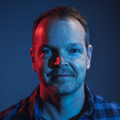Tesla Superchargers About to Get Crowded as Rivian Adopts Tesla Charging

Today Rivian announced that it will join GM and Ford in adopting Tesla’s North American Charging Standard (NACS), meaning that Rivians will be able to use Tesla’s Supercharger network. The R1T and R1S won’t have factory-installed NACS ports until 2025, but adapters will be available early next year. The upcoming R2 model will also switch to NACS.
This content is imported from twitter. You may be able to find the same content in another format, or you may be able to find more information, at their web site.
Tesla posits the industry stampede to its chargers as a win-win for both parties, and it might be, financially. In Tesla’s statement about the Rivian news, Rebecca Tinucci, Tesla’s senior director of charging infrastructure, said, “We look forward to welcoming Rivian owners to thousands of our Superchargers across North America.”
Rivian CEO RJ Scaringe was understandably cheery about the announcement, saying, “The adoption of the North American Charging Standard will enable our existing and future customers to leverage Tesla’s expansive Supercharger network while we continue to build out our Rivian Adventure Network.”
The optimistic view is that if every electric car can use every charger, then everybody is better off. Right? Sure, unless you drive one of the cars that formerly had its own walled garden of charging competence. Meaning, a Tesla.
Thomas Trutschel|Getty Images
Looking a Little Crowded at the Charging Station
While rivals’ adoption of NACS instantly gives Tesla hundreds of thousands of new charging customers (and licensing fees from manufacturers), the news isn’t as wonderful for Tesla’s own customers, who’ll now face bigger crowds at the finite number of Superchargers.
Grant Larsen, owner of a 2020 Model 3, says, “That’s really surprising that they’re letting other companies in. Superchargers already get crowded and charge speed goes down if someone is right next to you. So I’m not super excited about this, because Tesla owners can’t go anywhere else and get the same charging experience. Most other chargers are slow.”
But if you’re on the other side of these announcements, and the Supercharger drawbridge is on the way down, the prospect of reliable fast-charging would relieve a huge EV-ownership pain point. Neil Mandt, who drives a 2023 Mercedes EQS, says: “The biggest nightmare about this car is that I can’t get to fast-chargers. I always have to wait in line like it’s the gas embargo from the 1970s. Opening up the Tesla chargers to everybody would be amazing.”
Mercedes-Benz hasn’t announced any plans to adopt Tesla’s charging standard . . . yet.


Senior Editor
Ezra Dyer is a Car and Driver senior editor and columnist. He’s now based in North Carolina but still remembers how to turn right. He owns a 2009 GEM e4 and once drove 206 mph. Those facts are mutually exclusive.





